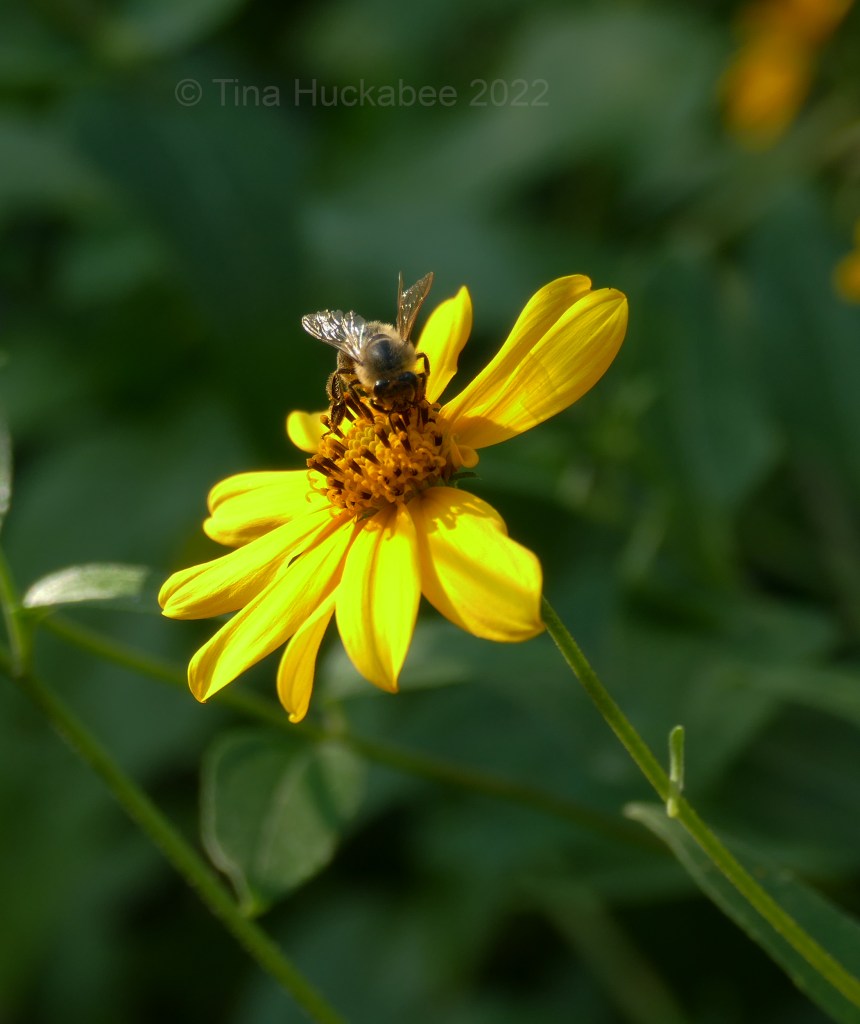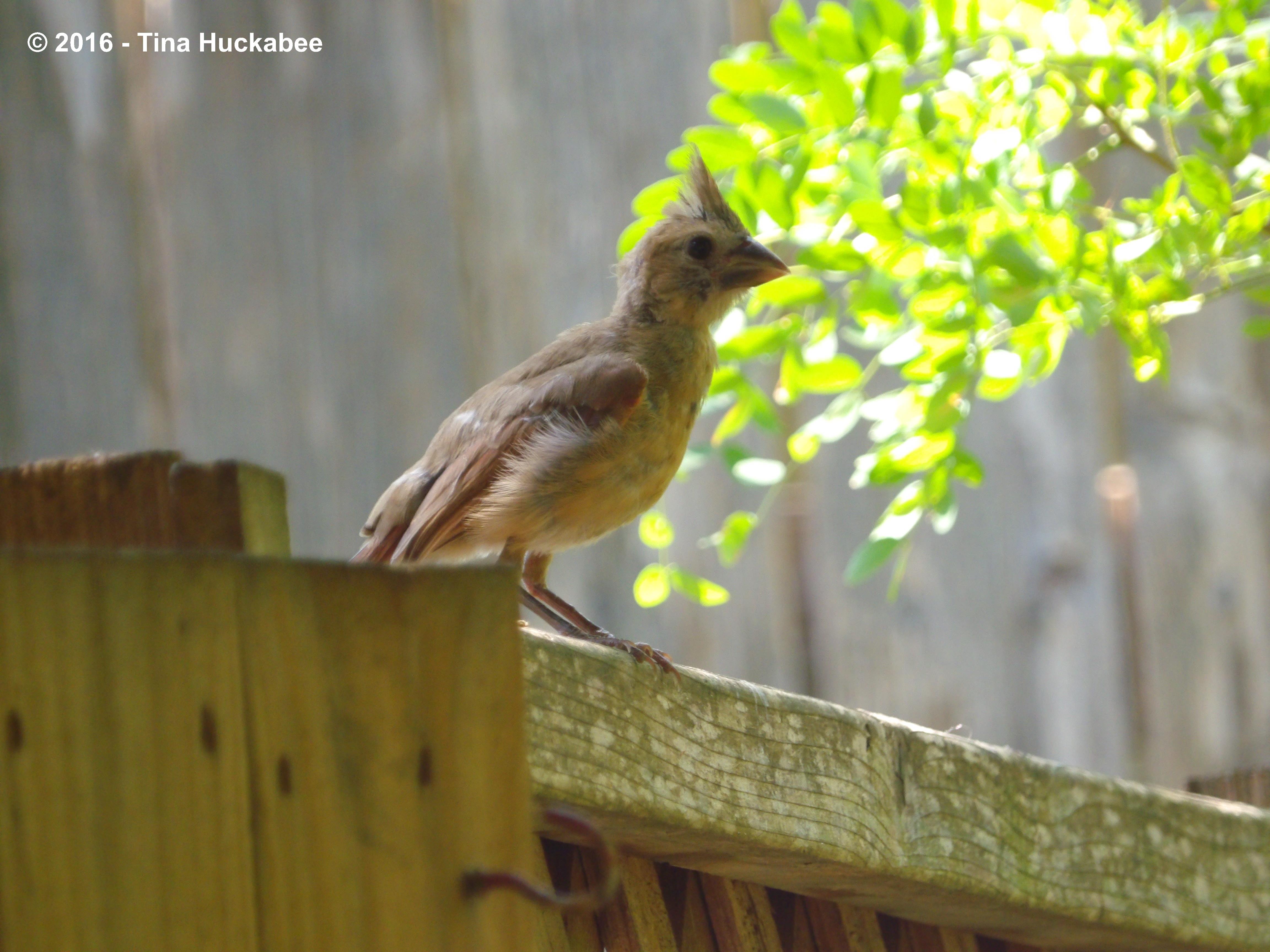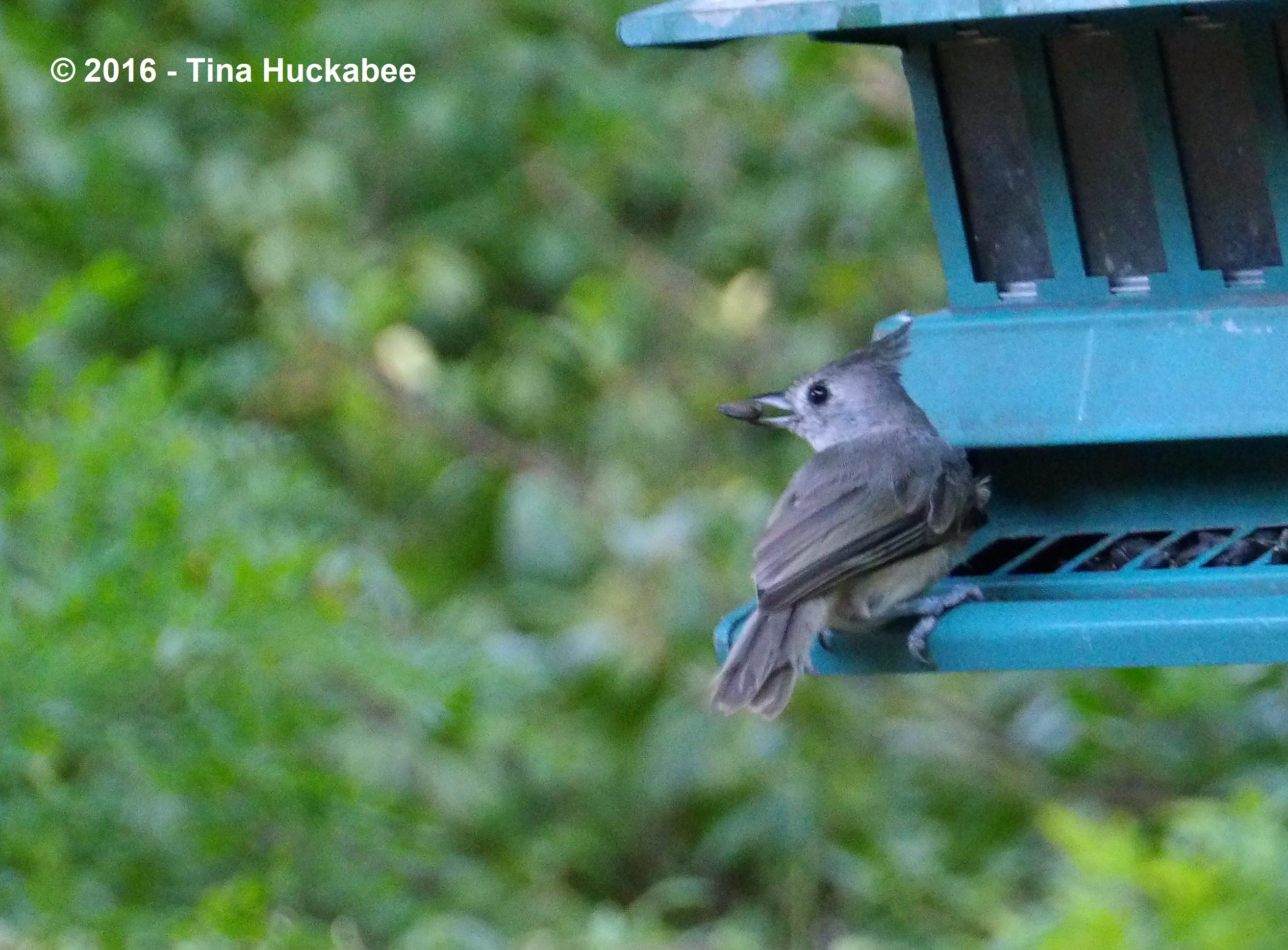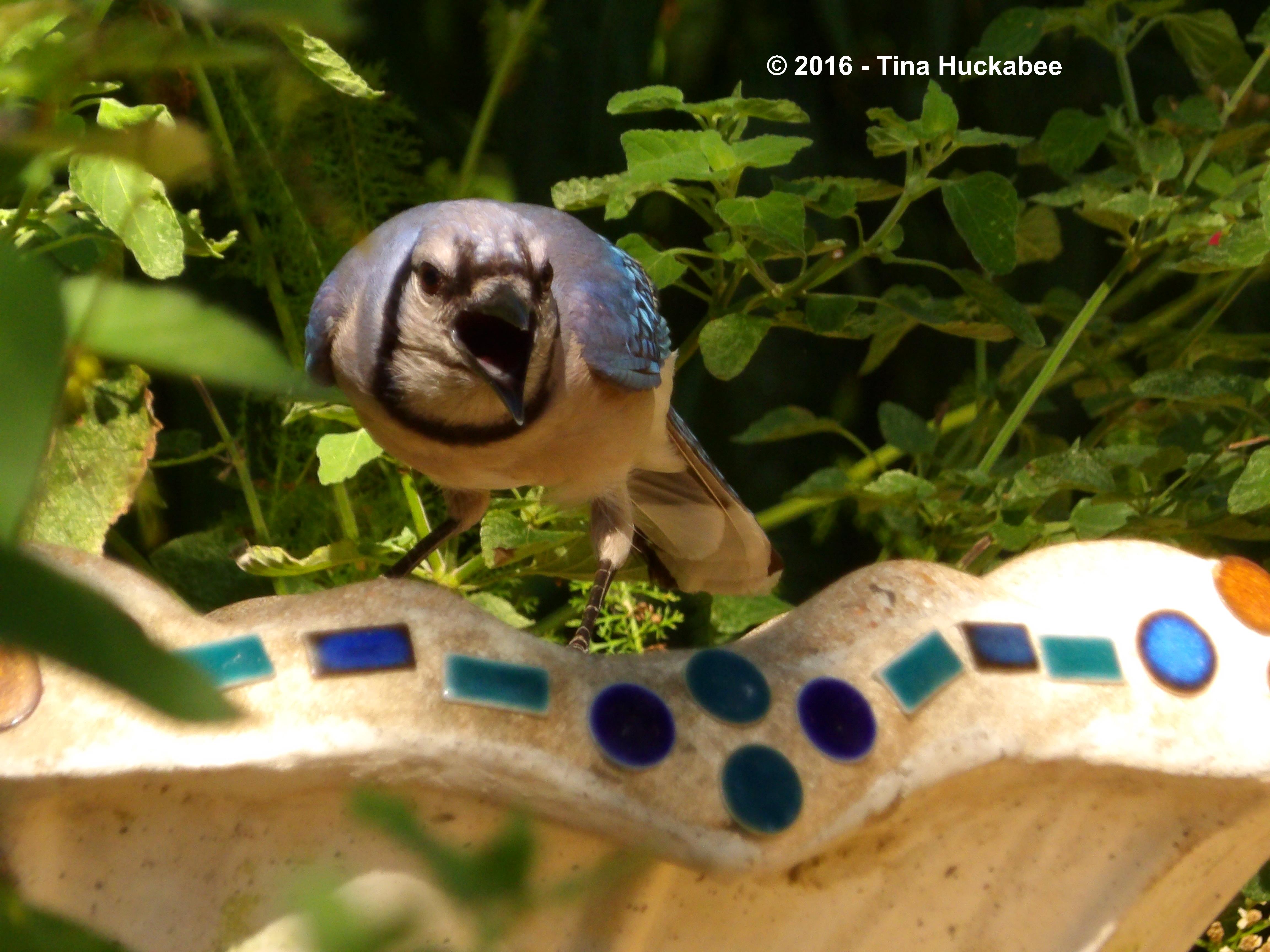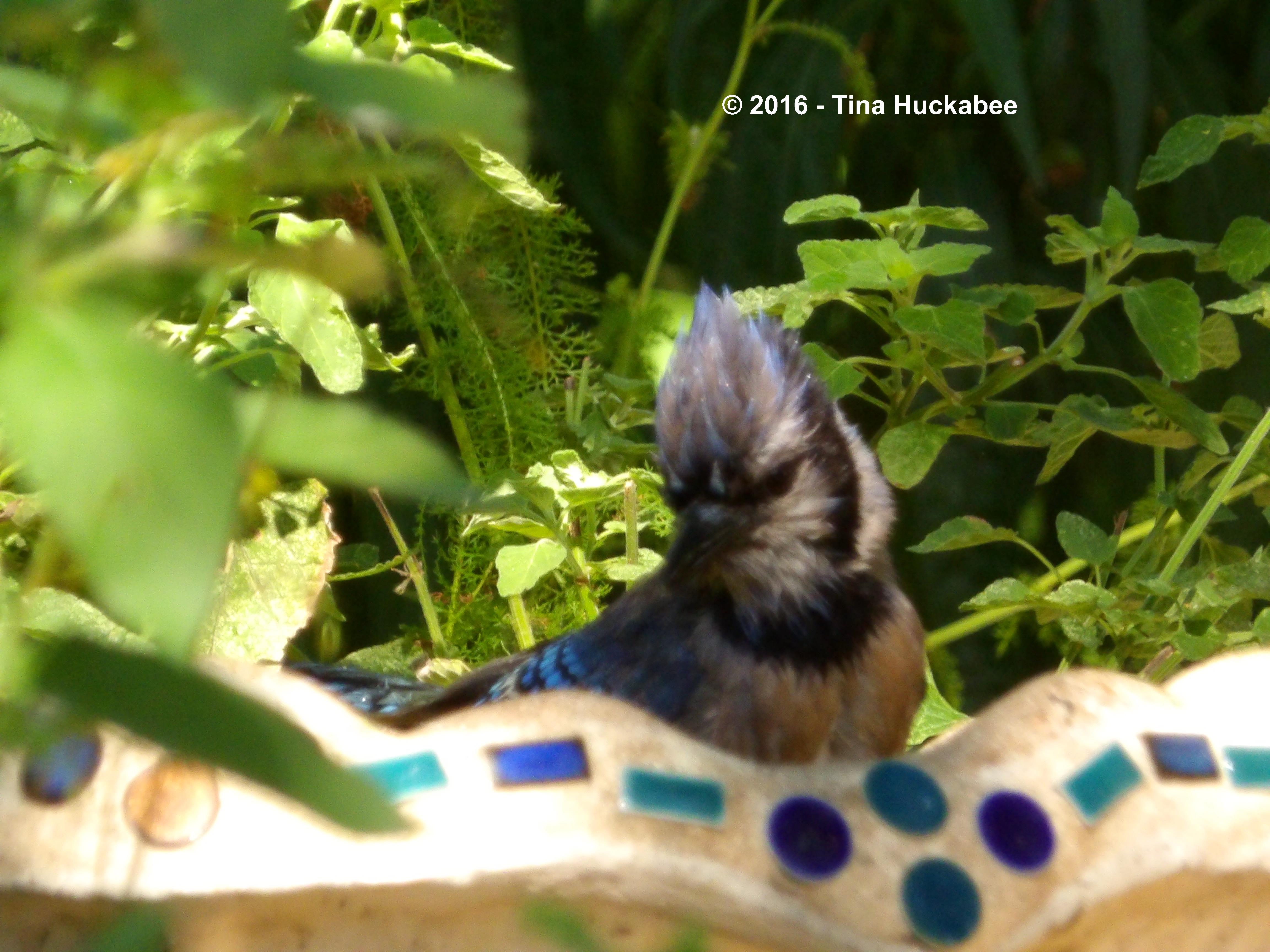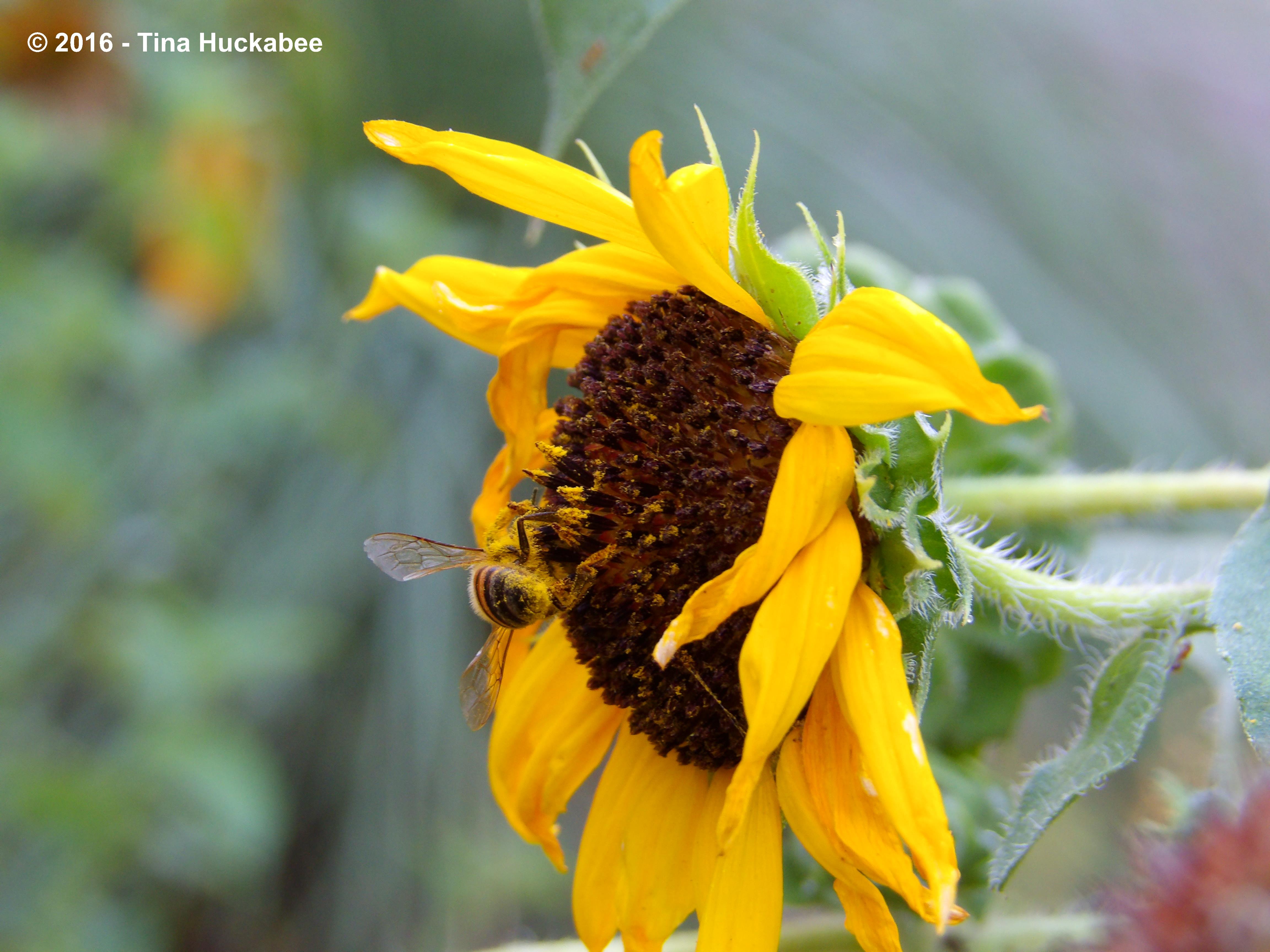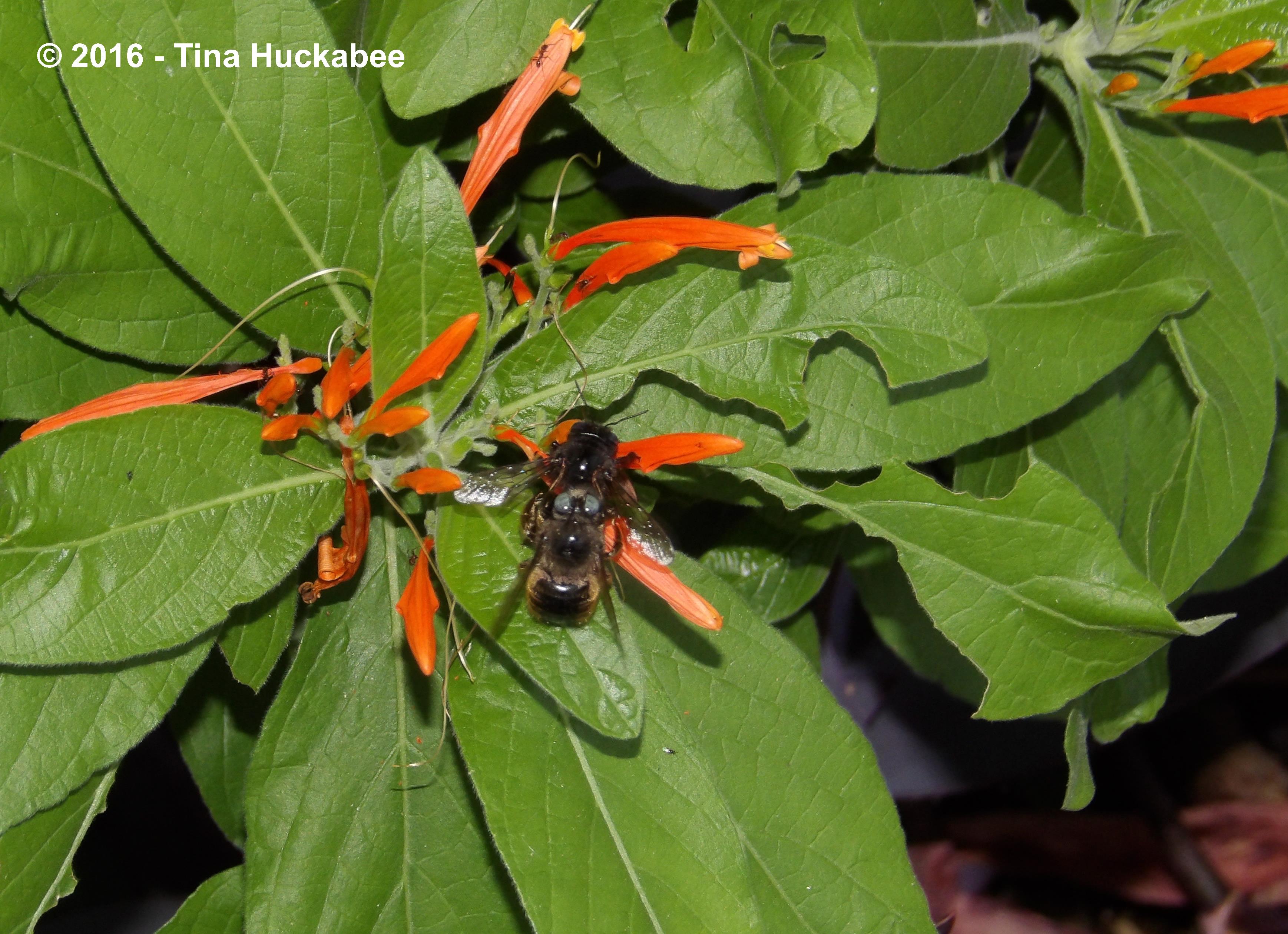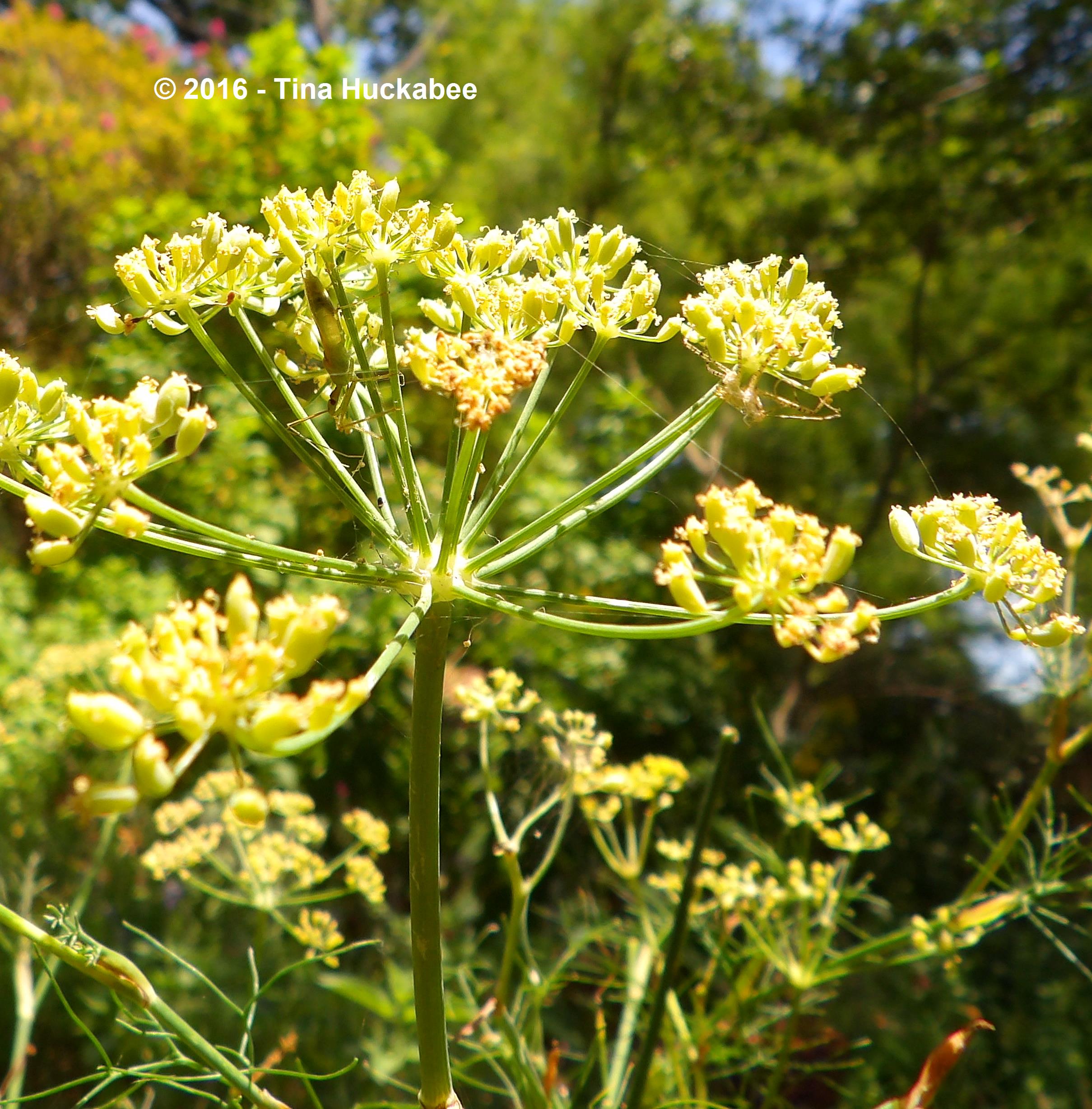Them in the equation are native plants, they, the pollinators. Pollinators and native plants share a long evolutionary history, having developed mutually beneficial symbiotic relationships: plants rely on pollinators for procreation and genetic diversity; pollinators rely on plants for sustenance and protection. Additionally, both plants and pollinators are gorgeous, admirably intricate and visually appealing, especially when working together, creating biodiversity magic.
Most people casually acquainted with the idea of pollination view bees and butterflies as front and center in the pollination world. But a huge variety of other insects also pollinate and they are important contributors to the health of plants in particular, and of ecosystems in general. For example, flies are key pollinators in most environments. In spring, I spied this Long-bodied syrphid fly, Fazia micrura, nectared on a cluster of spring blooms of Roughleaf Dogwood, Cornus drummondii. No doubt, the fly carried some pollen to other dogwood trees, and to plants beyond.

Wasps comprise a huge group of insects and are often maligned because they sting. But like this Euodynerus megaera on Yarrow, Achillea millefolium, they are common flower visitors and important pollinators.

On a different cluster of Yarrow florets nectars a different kind of wasp, a Mexican Honey wasp, Brachygastra mellifica.

While most blooming plants will attract some pollinators, native plants are particularly important sources of food for variety of pollinators. This Henry Duelberg Sage, Salvia farinacea ‘Henry Duelberg’, hosts a native Horsefly-like Carpenter bee, Xylocopa tabaniformis.

And here, a related native bee, a Southern Carpenter bee, Xylocopa micans, zooms in for a sip on the same plant, though a different flower stalk.
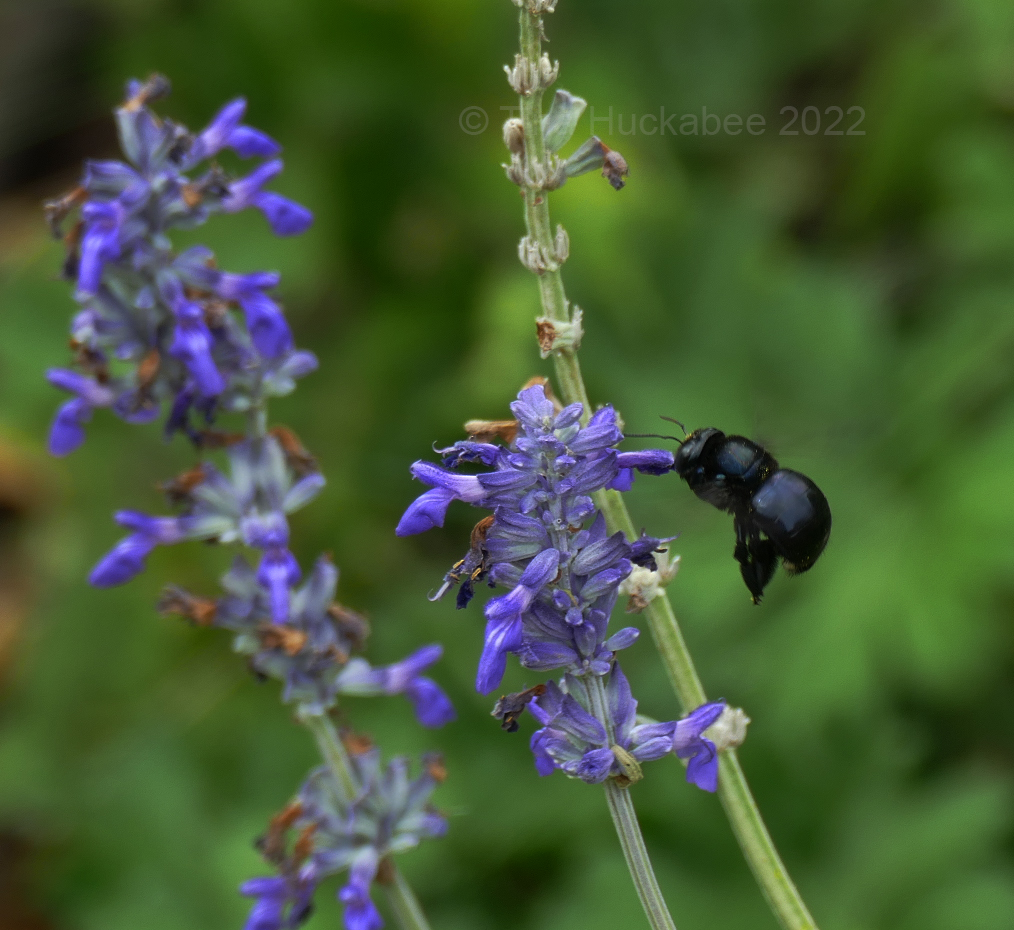
Both of these bees are native, or wild bees. There are about 20,000 native bee species in the world, about 350 of those are here in Texas. Most are solitary, unlike the better known honeybee. They come in an array of colors and sizes. Some, like the two carpenter bees above and most bumble bees, are large; many are tiny, like this Ceratina bee (probably?) who is crawling along the pollen offerings on the diminutive bloom of White Avens, Geum canadense.

Like bees, butterflies partner with flowers and add beauty, movement, and life to gardens and natural areas. This Little Yellow, Pyrisitia lisa, pairs nicely with its pink provider, the open bloom of a Rock Rose, Pavonia lasiopetala.
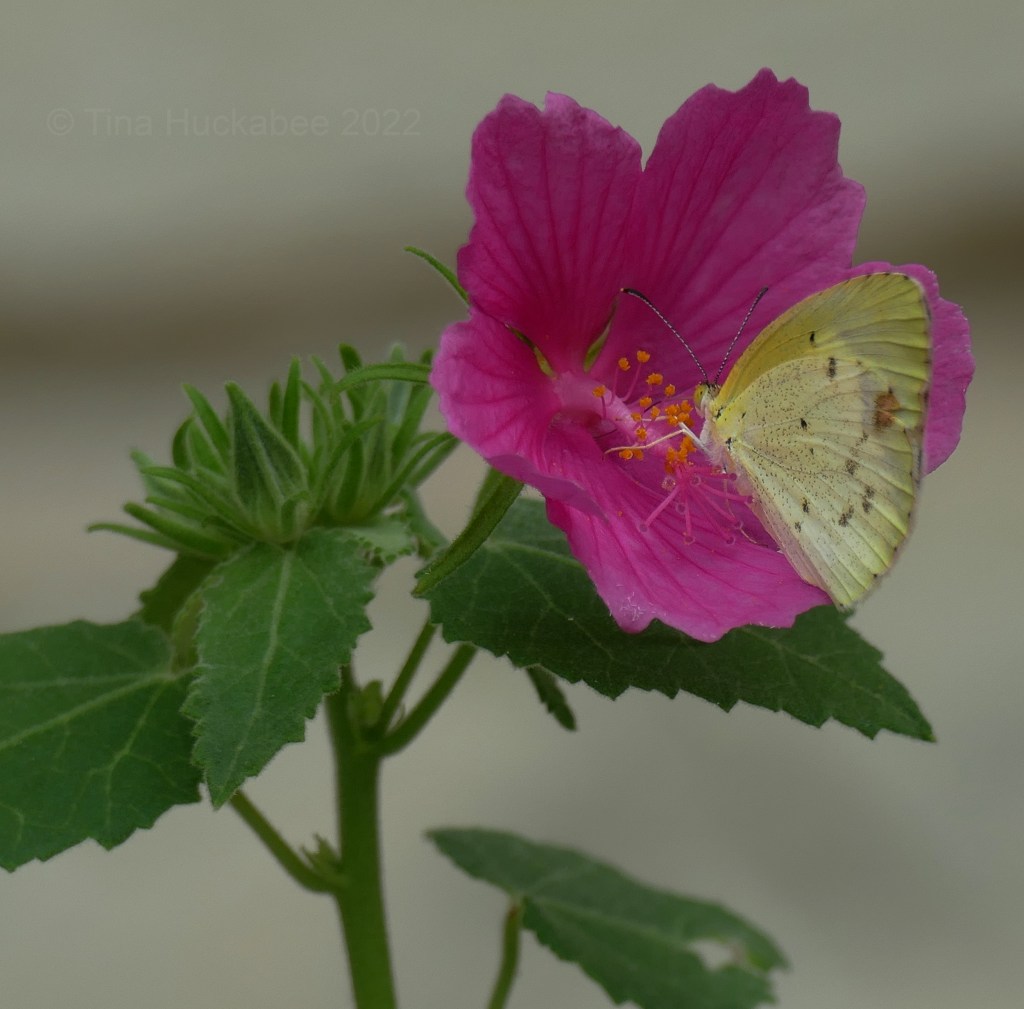
For most of us, it’s the big, bodacious butterflies that we notice in a garden. And why not? They’re stunning as they waft through the garden, a pleasure to observe! I was pleased to capture the underside of this Pipevine Swallowtail, Battus philenor, as it sipped from a Turk’s Cap, Malvaviscus arboreus var. drummondii.
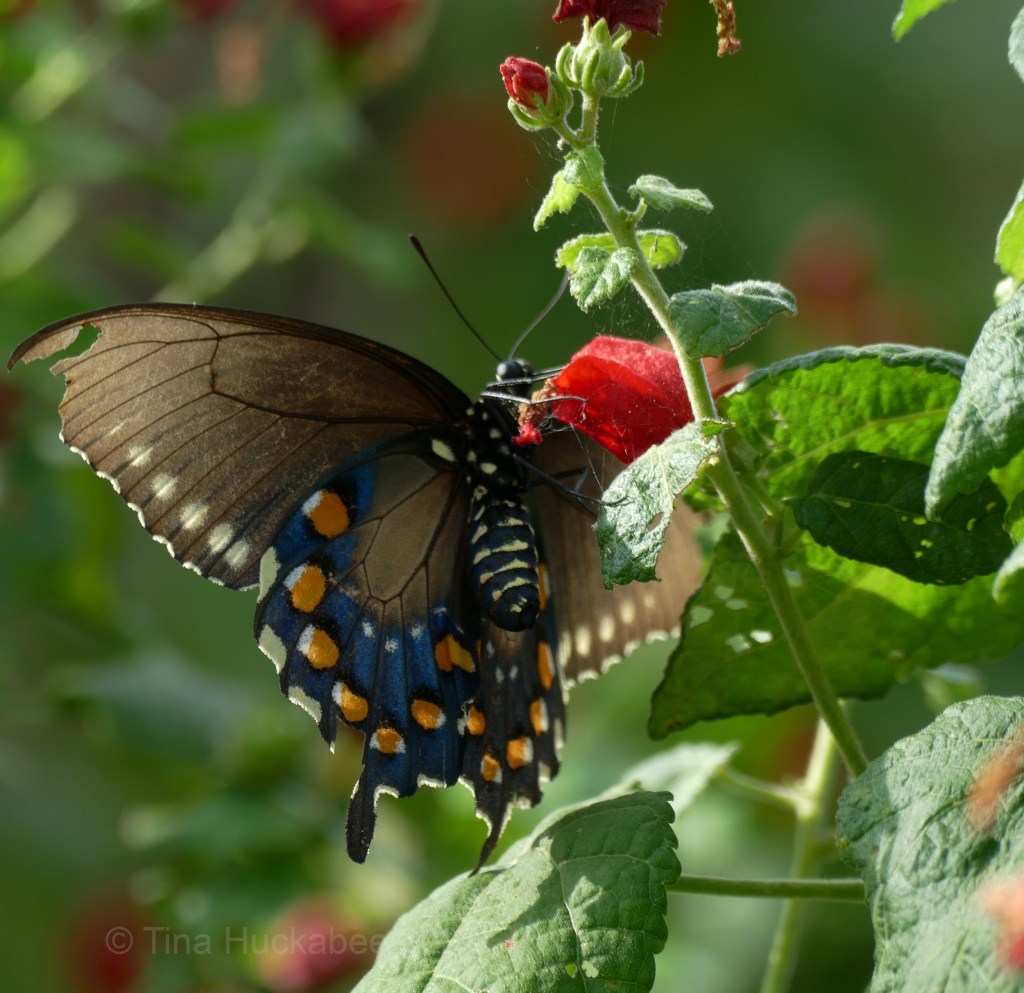
Wings-up is another Pipevine enjoying the bounty of an American Basket-flower, Centaurea americana. Non-native sunflowers look on with envy, though they have plenty of visitors of their own.
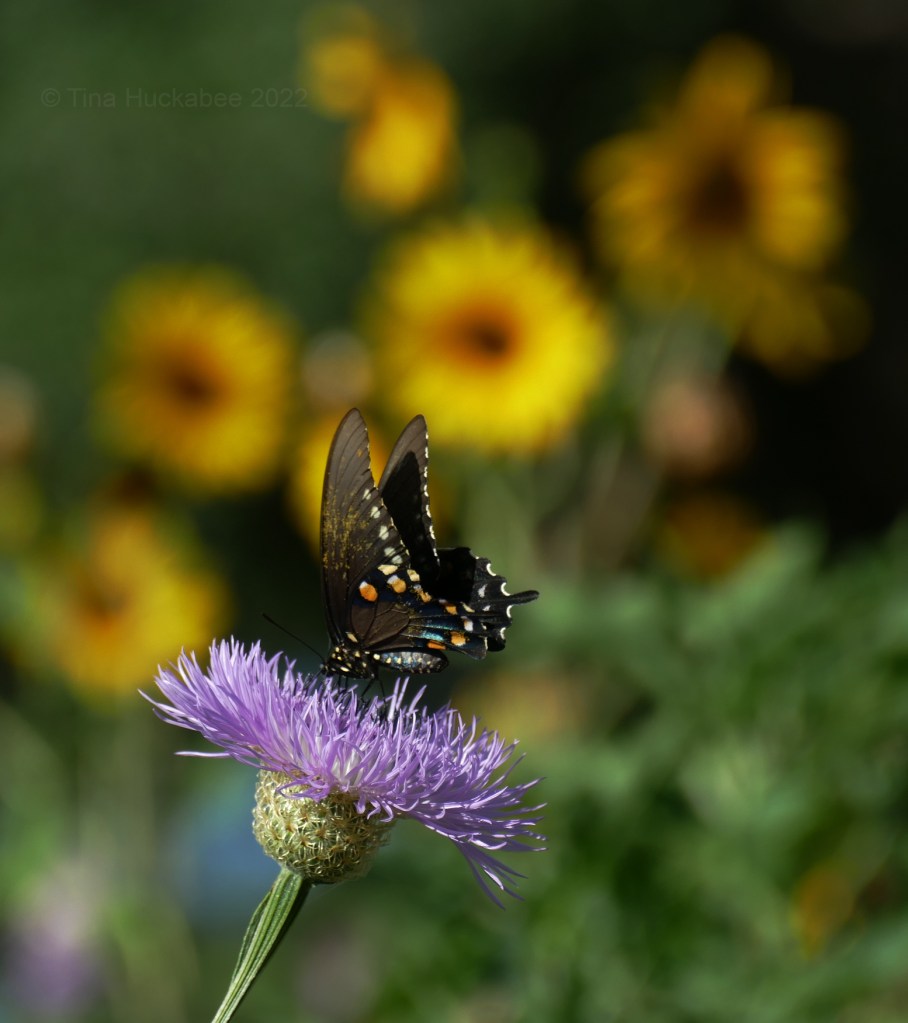
One of the reasons that Pipevine Swallowtails regularly visit my garden is that I grow a host plant called Dutchman’s Pipe, Aristolochia fimbriata. Though I extol the virtues of native plants and choose them when I can, the Aristolochia fimbriata is not a native-to-Texas plant. Unfortunately, the native Aristolochia in Texas aren’t easily available commercially, so a non-native is a good substitute. This pretty ground cover of green leaves decorated with spidery white veins loves shade and spreads nicely–that is until the Pipevine caterpillars munch it to oblivion. That said, after the caterpillars lay waste to the plant, it pops back vigorously, rapidly unfolding its foliage for the next generation of hungry, hungry caterpillars.

In addition to providing both nectar and host plants for butterflies, it’s good to have limb and branch piles in the garden for insects, including many native bees, to create nests for their young. It’s important to leave the leaves in your garden after autumn’s drop, so that over-wintering insects–and there are many–have a safe haven in cold, wet weather conditions. Allowing some bare soil is important for ground nesters, as there’s so much land dressed with impervious cover or sterile, mono-culture turf. Providing water is always a must and pesticides should never be used in a pollinator garden. Insects aren’t pests, but instead are vital components to a healthy, vibrant ecosystem and that’s what a garden should aspire to.
Some plants seem to attract every pollinator around. Purple Coneflower, Echinacea purpurea, is one of the flowers that all kinds of pollinators flock to, like this Tiger Swallowtail, Papilio glaucus,

…and this American Lady, Vanessa virginiensis.
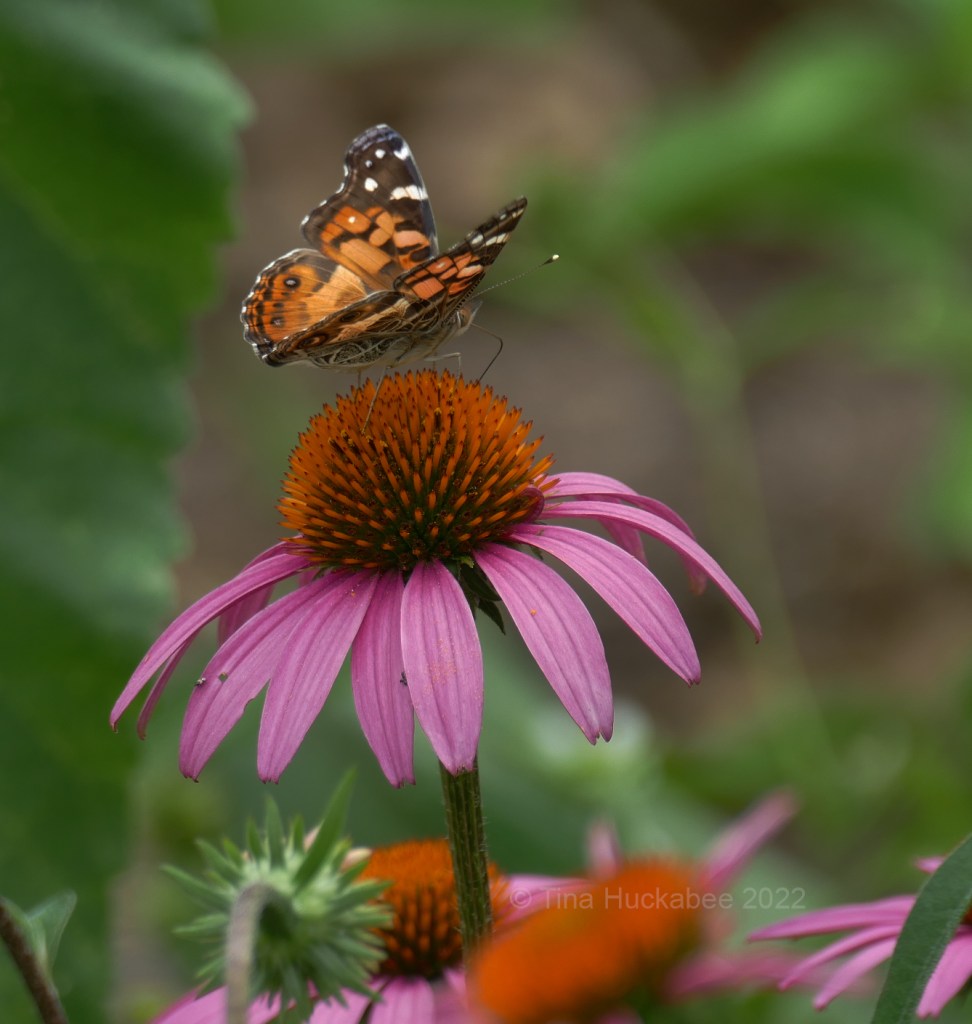

The big butterflies are easy to spot, hard to miss, and lovely to behold, but there are scads of little butterflies that also contribute to the pollination party. This Green Skipper, Hesperia viridis, matches its small flower’s size. The skippers are often tricky to identify, as there are many with similar coloring and markings, and they’re typically fast fliers. They’re fun to watch, challenging to identify, and important in the fabric of the ecosystem.

Some pollinators are specifically aligned with certain plants, much like some animals only eat certain plants. When my Barbados Cherry, Malpighia glabra, blooms its ruffly pink flowers, several individuals of this fuzzy golden and black bee arrive, buzzing all over the shrub. I don’t know what the bee is, I’ve never definitively identified it. I’m now thinking that it may be a Foothill Carpenter bee, Xylocopa tabaniflormis ssp. orpifex–but I’m far from certain that’s correct. It could also be some kind of bumble bee, or perhaps, a long horned bee. I’ve never seen this species of bee at any other time or on any other plant except for the Barbados Cherry. Could these two organisms–plant and insect–exist in a mutually exclusive relationship? I don’t know the answer to that, but will continue to observe and with some additional reading, learn more.
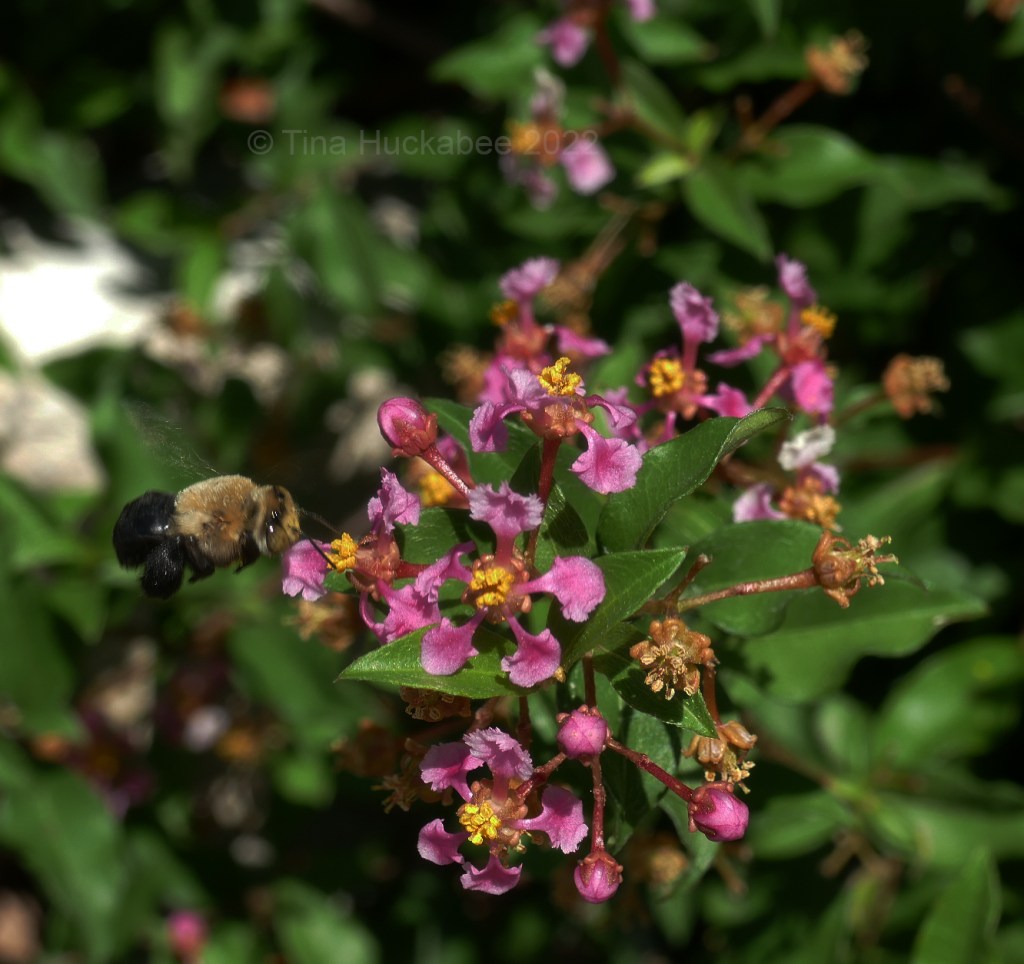
I love native plants and I always encourage their use in the garden. But sometimes, they aren’t so readily available and gardeners must rely on non-natives for their pollinator party needs. I also love hardy non-natives, especially when they provide for wildlife and aren’t invasive. In my own garden, two summer favorites are annual sunflowers, common in urban settings thanks to commercial black-oiled sunflower seeds,
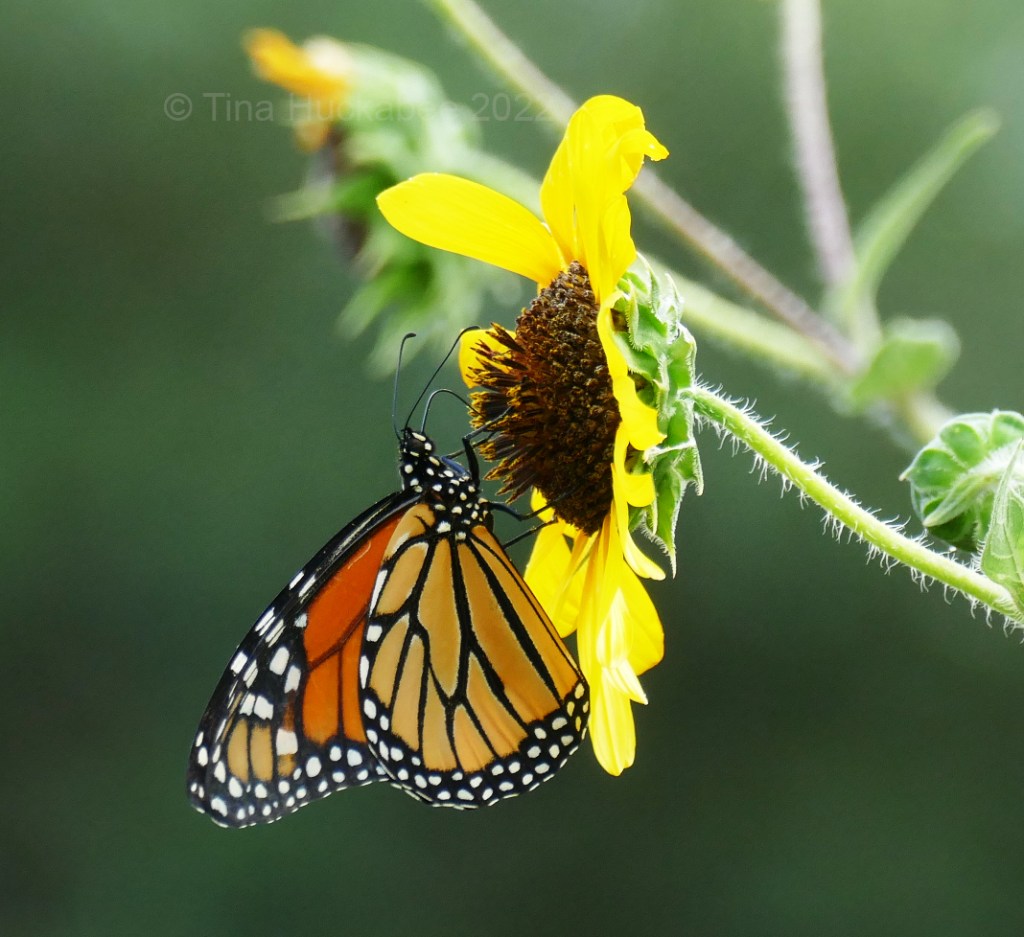
…and the perennial, blooming shrub, Mexican Honeysuckle, Justicia spicigera.

As long as flowers provide, Monarch butterflies partake!
This week is Pollinator Week celebrating the importance of pollinators in our environment. It’s not hard to encourage pollinators to live in your garden. Decide on a patch (or more!) in which to remove turf, research plants which grow well where you live–and get planting! Always add some host plants for butterfly larvae, some wood piles for other insects, some bare soil for the ground nesters, and water for everyone; don’t use pesticides and you’ll be in pollinator business. Installing a pollinator garden is less work than toiling over high-maintenance turf and it’s more interesting, full-of-life and lovely. You’ll be amazed at who will show up to be part of the garden experience. Bees, butterflies, bugs, birds–they all have a part in a pollinator garden.
A garden isn’t a garden without the wings of life that give it purpose.
